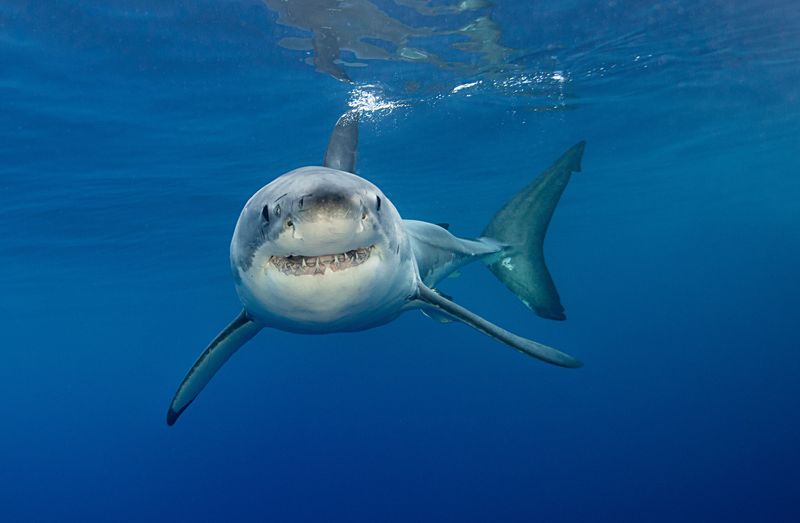The
Great White Shark (Carcharodon carcharias) is one of the best-known and most fascinating sea creatures. With its imposing size of up to six metres in length and its characteristic appearance, it has secured itself a place in popular culture. But behind the often fearsome image lies a highly developed predator with amazing abilities. .

The streamlined body of the
Great White Shark is perfectly adapted to life in the ocean. Despite its size, its cartilaginous skeleton gives it remarkable flexibility and manoeuvrability. The eponymous white belly colouring serves as effective camouflage (counter-shading).
The
Great White Shark's highly developed sensory organs are particularly impressive:
The eyes have a well-developed fovea centralis, which enables sharp vision and colour perception.
The nose can detect the tiniest scent traces in the water.
The Lorenzinian ampullae, special sensory organs in the snout, enable the perception of electromagnetic fields of the prey from a great distance.
Great White Sharks are cautious and efficient hunters. They usually surprise their prey from ambush by attacking in a flash from the depths. After the first bite, they often let go and wait until the prey bleeds out to save energy. Their main diet consists of fatty marine mammals such as seals and sea lions.
Contrary to previous assumptions,
Great White Sharks are not purely solitary animals. They occasionally form small groups and display complex social behaviour, which manifests itself in various swimming movements and body postures.
One fascinating aspect of the
Great White Shark is its ability to maintain its body temperature 10 to 15 degrees Celsius above the water temperature. This enables it to hunt efficiently and swim quickly even in colder waters.
The
White Shark is a perfect predator and has a so-called revolver bite, which renews itself throughout its life and new teeth are constantly being added. The foremost row of teeth forms a closed cutting edge, with the teeth becoming larger towards the tip of the mouth. There are 23 to 28 teeth next to each other in the
upper jaw and 20 to 26 in the
lower jaw , which are closer together. The teeth of an adult Great White shark have a biting force of up to three tonnes.
The
Great White Shark is a fascinating creature that still harbours many secrets. As an apex predator, it plays an important role in the marine ecosystem and deserves our respect and protection.
